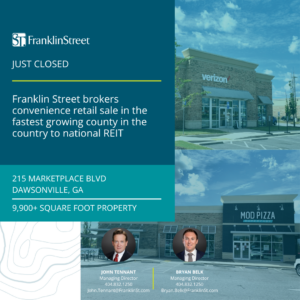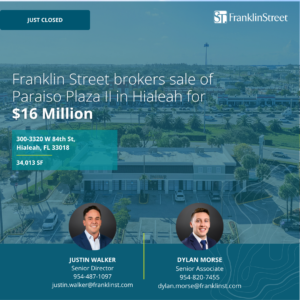The National Flood Insurance Program (NFIP), where most businesses buy coverage, has announced that rates will increase 5.4% in April. Other changes are coming, many of them tied to sea level rise, observers say. But business and commercial property owners can take actions to mitigate the hit.
“Sea level rise is obviously a real thing and is going to have an impact on rates,” said Douglass A. Jones, partner in the JAG Insurance Group. “But storm surge is an even bigger issue.” Low-lying areas are most at risk, he said.
Backed by the Federal Emergency Management Agency, the NFIP was considered the best source for low rates but suffered intense losses from Hurricane Irene and superstorm Sandy, observers say. Private insurance companies, once not major sellers of flood insurance, have become a real alternative.
“the private market was always out there, but people didn’t know about it,” Mr. Jones said. “Their rates can actually be less than the government’s. They have a diversified book of business; they can write a little bit of everything,” allowing them to recover more quickly from a loss in one area.
But not all insurance agents can or will sell private flood insurance, he said. “Consumers need to know the options that exist,” he said. “Go with a larger broker. Shop around. Don’t be pigeonholed.”
It’s important to know that bank policy-makers are concerned about sea level rise, he added. Despite the fact that Miami Beach has installed stronger pumps and is raising the streets, at least one bank recently declined to write a 30-year mortgage for a home on North Bay Road, Mr. Jones said.
Consumers should also be aware that the federal government is likely to re-map Miami-Dade County for flood insurance purposes, said Dulce Suarez-Resnick, vice president of NCF Insurance Associates. The last map was drawn in 2009, and map reviews are usually conducted every 10 to 15 years, she said.
Recent events might prompt more areas to be considered high-risk, she said. “Though they installed pumps on Miami Beach, when the king tides coincided with the full moon, we still flooded.”
The Biggert-Waters Flood Insurance Reform Act of 2012 “authorized and funded the national mapping program and certain rate increases,” said the NFIP website.
But once it was enacted, rated skyrocketed, Ms. Suarez-Resnick said. “The industry went to Washington and said, ‘You can’t do this. Homes will become more difficult to sell and more difficult to stay in.’ So they enacted the Homeowner Flood Insurance Affordability Act of 2014,” which lowered some rate increases, and implemented a surcharge. “But,” she said, “business owners are not protected.”
Private insurance, she said, allows owners to add some “bells and whistles” that government coverage doesn’t, including loss of income after an emergency.
Florida property owners deserve a break, she said. Of 5 million flood insurance policies sold in the U.S., 2 million are for property in Florida, and those premiums subsidize damages in states more prone to flooding. “I always knew we were a donor state,” Ms. Suarez-Resnick said. “I think we are THE donor state.”
“We have to start looking at ways to make buildings more resilient,” said Wayne Pathman, a principal of Pathman Lewis LLP. “We have to press government for better solutions. Raising the roads and putting in pumps is not a resilient solution; it’s a mitigation solution. We have to find better ways to disperse water. But because of the uniqueness of South Florida, a lot of solutions are not applicable.”
After disasters like Hurricane Katrina and superstorm Sandy, the federal government “was $25 billion to $27 billion in the red, and rates are going to rise significantly,” said Mr. Pathman, who is chairman of the Mimi Beach Chamber of Commerce and chair of Miami’s Sea Level Rise Committee. When the Biggert-Waters Act removed subsidies, some policyholders saw their rates increase 500%, he said.
”Infrastructure is the responsibility of the city, county and state, but people should be concerned with what they can do for their own properties,” he said. While the federal government relies on maps to determine flood risk, private insurers deal with each property on an individual basis, he explained. “They look to the owner to reduce risk.”
Owners should make sure their elevation certificates are accurate “especially if their rates are very high,” said Ryan Cassidy, Franklin Street senior director of insurance services. “It’s important to look into that.”
They can also hire an insurance consultant to help make their buildings more flood-resistant and to scrutinize other aspects of their insurance picture. “Our agency works with a few,” he said. Consultants can question whether a property is, indeed, in a flood zone “and sometimes get an amendment that pulls them out of a flood zone.”
And a consultant can help with the decision to stay in the government program or use a private carrier, “which are now more aggressive,” Mr. Cassidy said.



